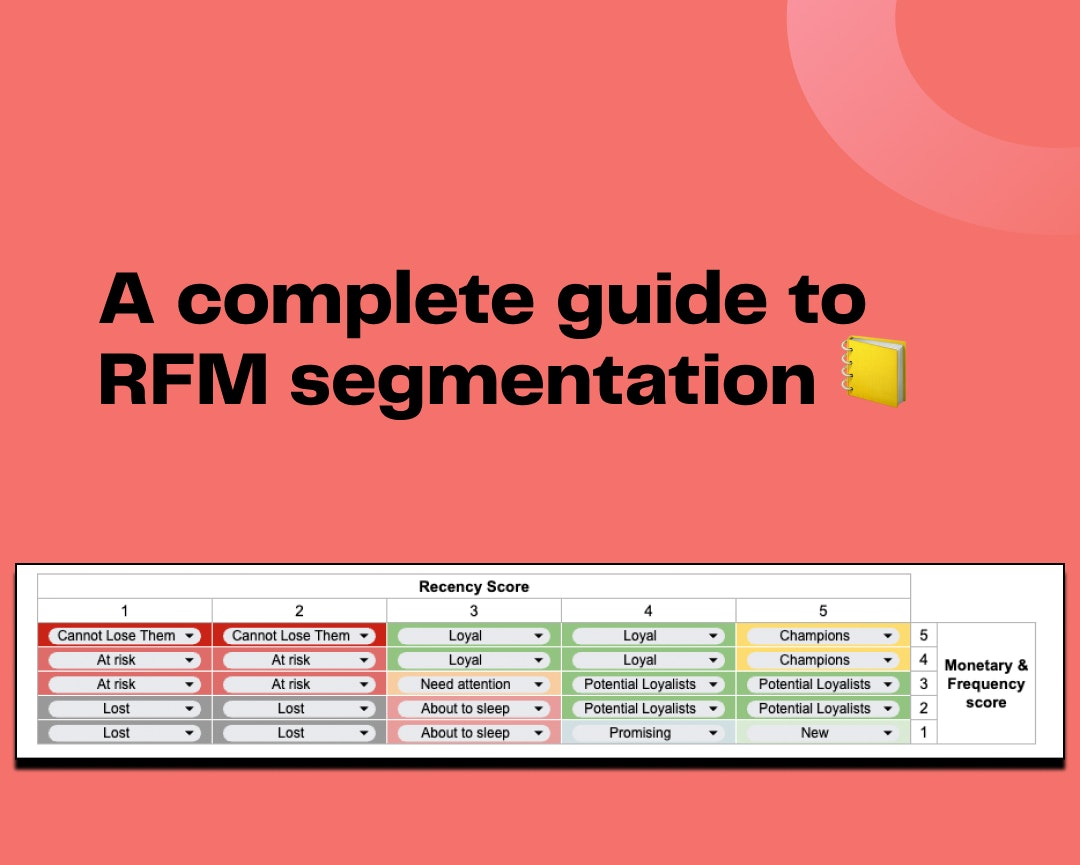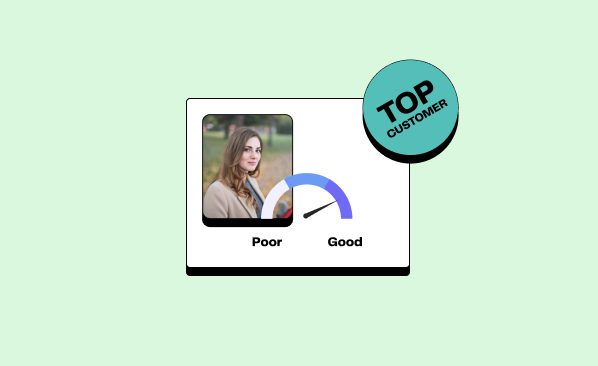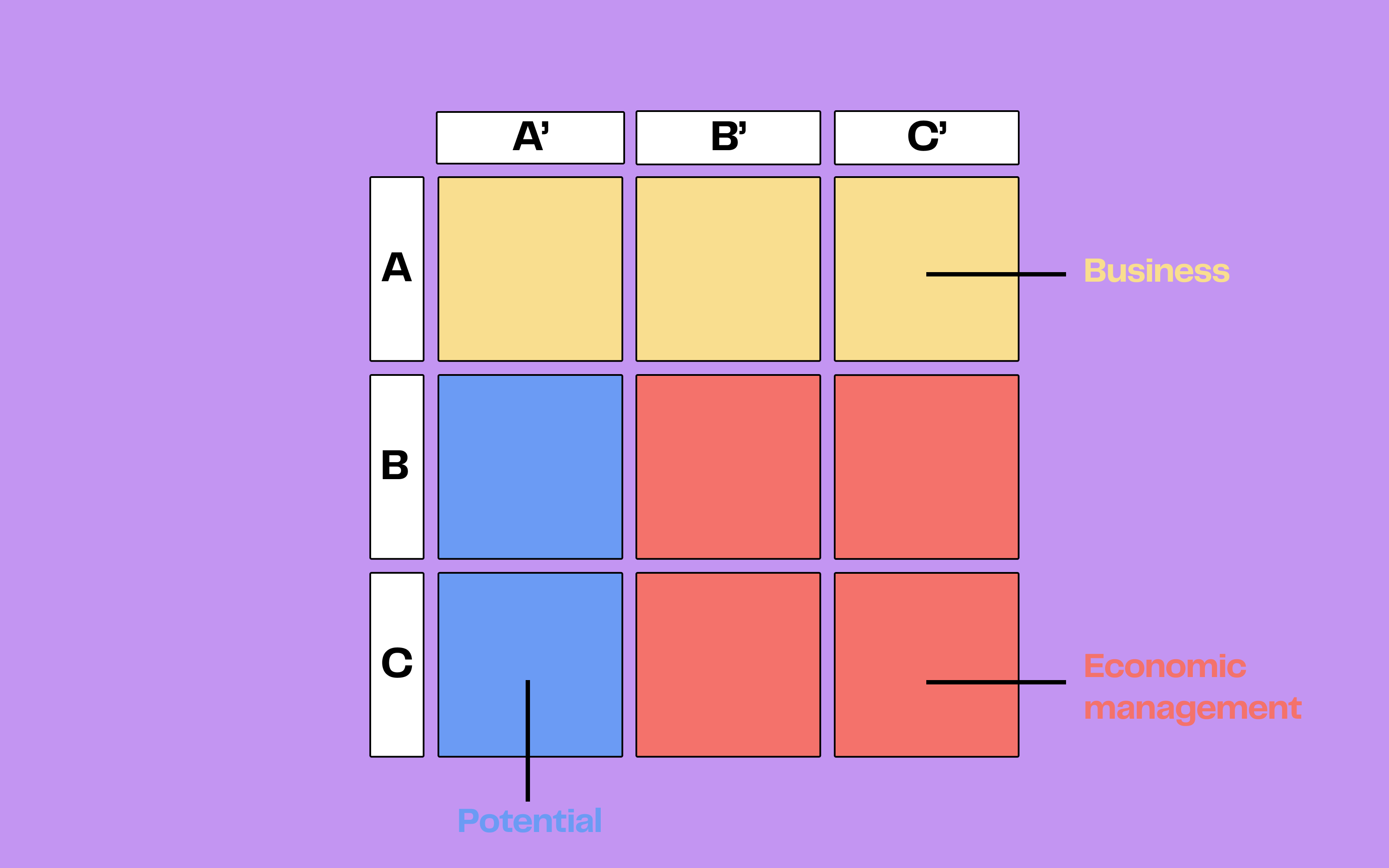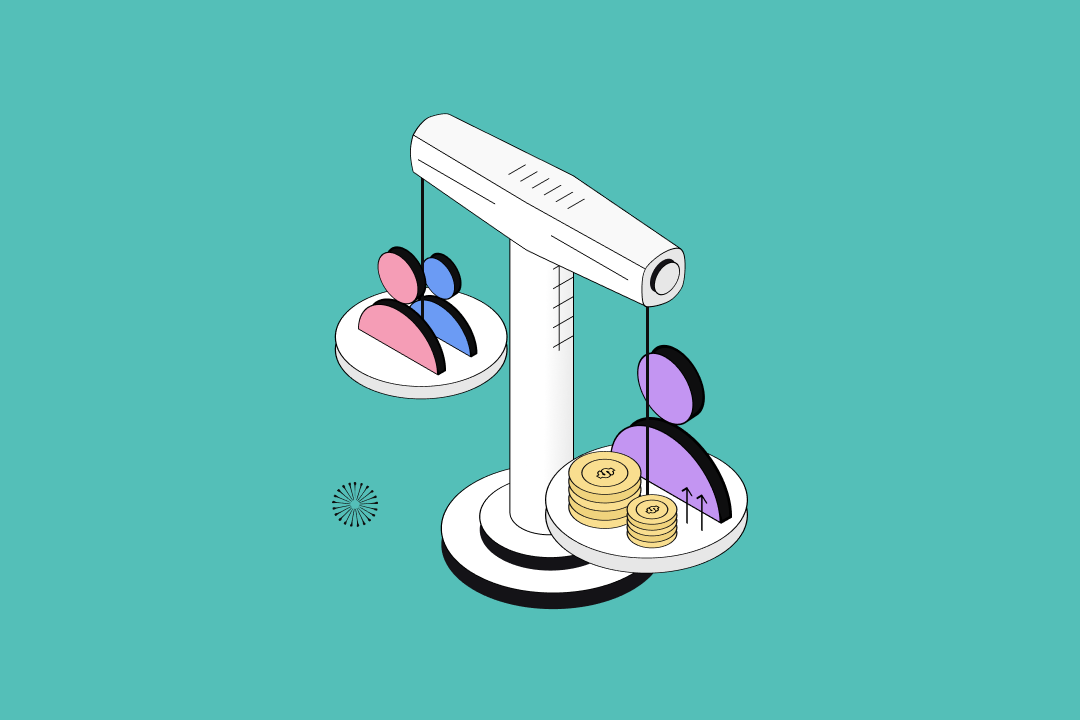
10+ examples of customer segmentation
8 min • Last updated on Jun 4, 2025

Alexandra Augusti
Chief of Staff
A one-size-fits-all marketing approach for all your customers will inevitably lead you into a wall, as each customer is unique. Thus, marketing segmentation, based on criteria such as purchasing behavior, preferences, demographic and geographic characteristics, is essential to precisely target the different segments of your customer base.
Recognizing the importance of the customer segmentation can transform your marketing approach and optimize your impact on the market. Through effective customer segmentation, you can tailor your offerings, develop specific campaigns, and implement more personalized strategies to meet the needs and expectations of each customer segment.
By analyzing available data on your customers and categorizing them according to different segmentation criteria, you can better understand their purchasing behavior, demographics, geographical specificities, preferences, and consumption habits. This will allow you to develop more targeted marketing campaigns, adapt your products and services according to the specific needs of each customer segment, and thus optimize your return on investment (ROI).
⚠️ It is important to note that customer segmentation is not a one-time task but a continuous process that requires regular evaluation and constant adaptation of your marketing strategies to remain competitive in your market.
The benefits of customer segmentation
The goal of customer segmentation is always to address consumers in a relevant way, targeting them at the right moment in their life cycle, with the right type of message.
By using marketing segmentation, you can identify growth opportunities and better meet the specific needs of each segment of your customer base, while strengthening your relationship with existing customers. Do not underestimate the importance of marketing segmentation in your business, as it can play a key role in your success in the market.
In particular, segmentation helps improve marketing performance and customer loyalty:
Better acquisition rate, with a lower Customer Acquisition Cost (CAC), through better targeting (especially through lookalike campaigns), dedicated offerings, or personalized messages to attract new customers
Better Customer Lifetime Value (LTV), through successful upsell or cross-sell opportunities. Using well-defined segments facilitates identifying new growth opportunities within your business. The suggestions you can make to your customers are more effective, because they target their needs directly and are more personalized.
Higher retention rate, through a better understanding of the needs of each segment of the market and therefore, a more appropriate response. Your customers are thus more likely to buy from your brand again.
Improved customer satisfaction, through an ultra personalized experience and a more efficient customer service. Having all the historical data on purchases, complaints, etc. on your support tools will create an improved experience at the end of the day.
Increased brand awareness in the market, through communications always adapted to the underlying context of each segment (period, culture, etc.)
As a reminder, only a customer segmentation based on in-depth analysis of customer data can help you develop impactful offerings and campaigns that meet the expectations of each segment of your customer base.
Socio-demographic segmentation
Socio-demographic segmentation is a marketing technique that divides a population into subgroups based on demographic characteristics such as age, gender, income, education level, or family situation.
This method allows companies to more precisely target their messages and products to meet the specific needs of each segment, especially if the range of products/services offered is extremely diverse, with multiple personas (men and women, children and adults, wide price range, etc.).
⚠️ However, it is crucial not to presume interests based solely on age or gender without additional data support, to avoid irrelevant or even offensive campaigns in the worst cases.
The most commonly used socio-demographic segmentations are carried out based on:
Gender: Cosmetics, clothing, or fragrances are often marketed differently by gender. An advertisement could target only a female clientele (with associated specific products) and another only a male clientele. However, it is essential for companies not to fall into reducing stereotypes and to think about remaining inclusive.
Age: Different generations have drastically different consumption habits from each other. Additionally, some products / services are likely to interest only one age group, and it is therefore relevant to address only that group.
For example, advertisements for baby diapers are generally aimed at 25-34-year-olds, the population most likely to be young parents. For example, it is assumed that this Pampers advertisement is aimed at parents, as shown by the "social proof" ("recommended by 96% of parents")

Pampers Advertising
However, a recent study by Kantar shows that age or generation segmentation is often not the most effective. Targeting the segment of parents who have had a child in the last 12 months vs. the segment of 25-34-year-olds for baby diapers is four times more effective. If you have the useful information available in your databases, use it!
Family situation: In a couple, married, with children, retirees, etc. So many characteristics that can be used as criteria for segmenting your target audience! You can tailor advertising creations according to the family situation, as Coca Cola did in its marketing campaign "Share a Coke".
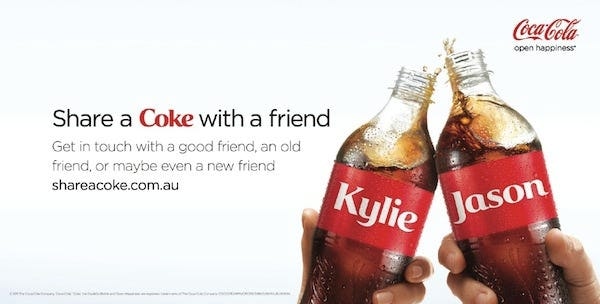
Share a Coke campaign by Coca Cola
Income level: By considering financial capabilities, you maximize the relevance and accessibility of your offerings. Assuming uniform purchasing power within the same demographic group is a frequent mistake that can limit the reach of your products or services.
Geographic segmentation
The geographical location of your customers is often a significant discriminating factor for their interest (or lack thereof) in a product or their receptivity to a message. This is particularly the case if your business extends to multiple countries, where significant cultural differences can be observed. This segmentation is also strategic when the location of your customers directly impacts your business (for example, in the real estate sector).
A company that excels in this strategy is AT&T, by adapting its campaigns to the geographical specifics of target regions/countries.
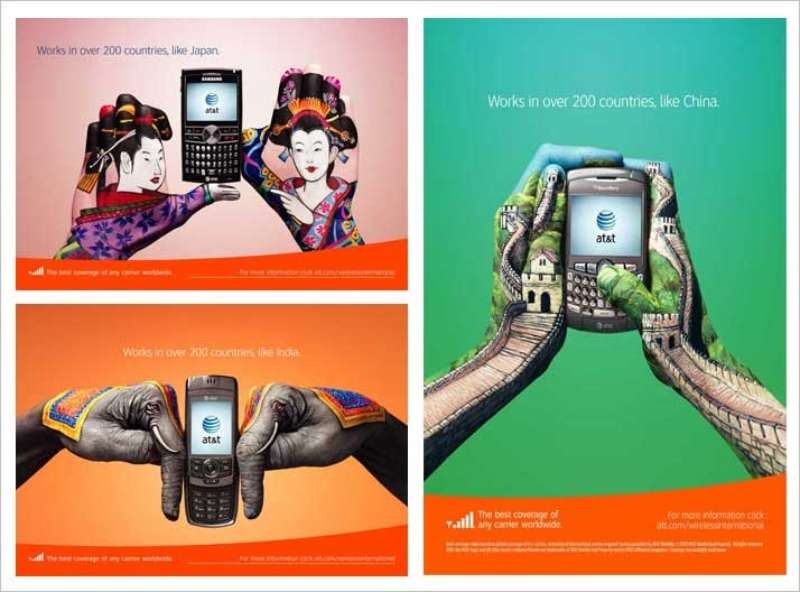
AT&T Campaign all over the world
Weather is also a dimension to consider when talking about geography! It is possible to communicate with your customers based on the weather conditions in their region.

Rainy ads from Cahart
Psychographic segmentation
It is also possible to segment your market based on the values and attitudes of your customers, to reach them on an emotional level. The idea is to go beyond socio-demographic criteria and take into account personality, interests, opinions, or lifestyle. This method promotes a deeper and more personal connection with your audience.
For example, Decathlon can target its customers based on their sports habits (fitness, outdoor sports, thrills, etc.). A segment of customers more attracted to indoor sports, for example, will be interested in promotions on fitness accessories, while lovers of outdoor activities and thrills will turn to camping equipment.

Decathlon: ads for outdoor activities lovers
⚠️ However, the error to avoid here is to rely on stereotypes rather than concrete data to define the personality traits of your customers. Rely solely on the information available on your customers in your company's databases and forget your biases.
Behavioral segmentation
The key principles of behavioral segmentation
In line with psychographic segmentation, it is possible to target consumers based on their purchasing behavior and engagement. This allows for personalized recommendations.
Past behaviors are often the most reliable predictors of future actions, so it would be a shame not to use them to personalize your marketing campaigns!
For example, Netflix uses this technique by offering recommendations based on users' viewing history. Moreover, the icons presenting the movies/series differ according to user preferences.
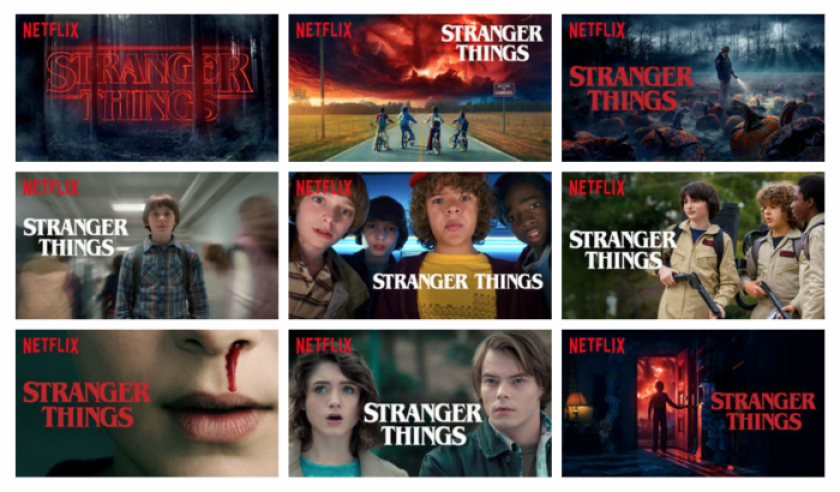
Netflix: Stranger things covers
Understanding the needs and interests of your consumers will greatly help you better segment your customer base.
Segmenting your customers based on their needs is an excellent way to better present your offerings and how they meet their expectations. Subsequently, communications can focus on what truly matters to each segment: values, used materials, manufacturing methods, etc.
For this, do not hesitate to ask them directly! A registration questionnaire is entirely possible, if you guarantee in return products or services adapted to their responses.
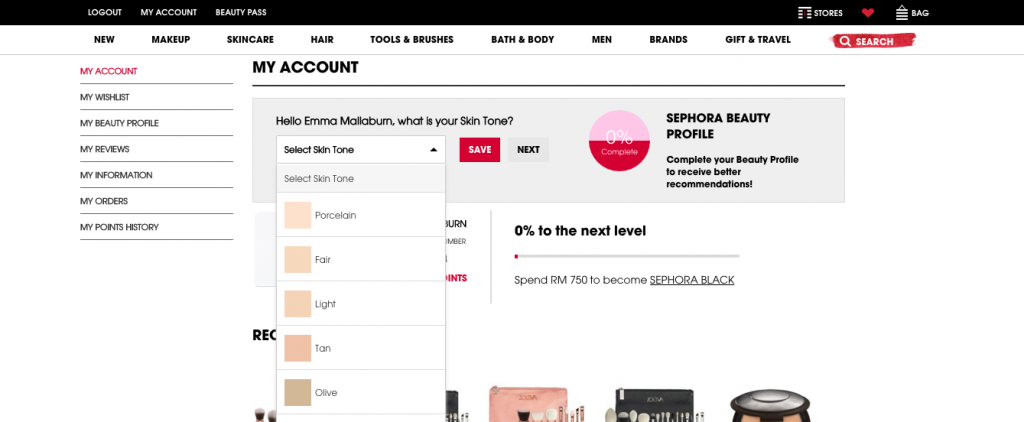
Sephora: Beauty Profile
💡 If you sell products that certain groups of people are skeptical about, do not hesitate to adapt your messages to transform indifference into active interest.
For example, Impossible Foods targets those skeptical about replacing meat by highlighting the environmental and health benefits of its products. Ignoring this critical segment could limit the market potential of its new products. It addresses it intelligently!

Plant-based burger for meat eaters only
Examples of behavioral segmentation
Various examples of behavioral segmentation are important to list, especially based on the stage reached in the customer journey.
New customers/new subscribers: the segment should be intelligently worked because it represents new growth opportunities for the company but is still to be convinced. For example, you can use welcome offers to engage them as early as possible.
Loyal customers: loyalty is a powerful lever to increase the long-term value of your customers. Encourage and reward loyalty to stimulate repeat purchases, for example with dedicated programs, exclusive offers, etc.
VIP customers: you can offer VIP offers to some of your most loyal customers to make them feel special and therefore more inclined to make a purchase.
Promophiles: you know these people sensitive to promotions, actively looking for the best deals online, via apps, or in-store? For businesses, targeting such buyers can be beneficial to clear stocks and boost sales during slow periods. However, it is crucial to balance promotions to attract these customers without devaluing the brand.
Abandoners: who has never received an email for an abandoned shopping cart? A classic of marketing, this method remains nonetheless effective if the campaign is intelligently tailored to address the friction points a customer may have encountered.
Inactive customers: here, the goal is not to explain the benefits of your company but rather to reconnect by reminiscing with clients. It is also possible to reactivate your inactive customers with dedicated promotions.
Note that it is essential to collect and analyze customer data to improve your segmentation. This will allow you to identify the different segments, their preferences, and buying behaviors more accurately. For example, by using segmentation criteria such as recency, purchase frequency, or average basket value, you will be able to personalize your marketing campaigns and send messages tailored to each segment.
RFM analysis is a very good methodology for segmenting customers based on their recency of purchase, frequency of purchase, and financial volume. Basing yourself on customer scoring or lead scoring also makes it possible to prioritise high-potential/value customers and to address each person appropriately, depending on their stage in the customer journey.
Occasion-based segmentation
Using special events to enhance customer engagement is an effective marketing strategy employed by many companies.
This is notably the case with Cadbury, which takes advantage of major holidays such as Easter or Christmas to launch thematic campaigns. By targeting these particular moments, where consumers are already more inclined to make purchases, Cadbury manages to significantly increase its sales through special products and contextualized advertising.

Cadbury: Easter campaign
Some brands go even further by targeting special events for a given customer, pushing personalization to the maximum. This is particularly the case for companies offering special deals for birthdays, holidays, etc.
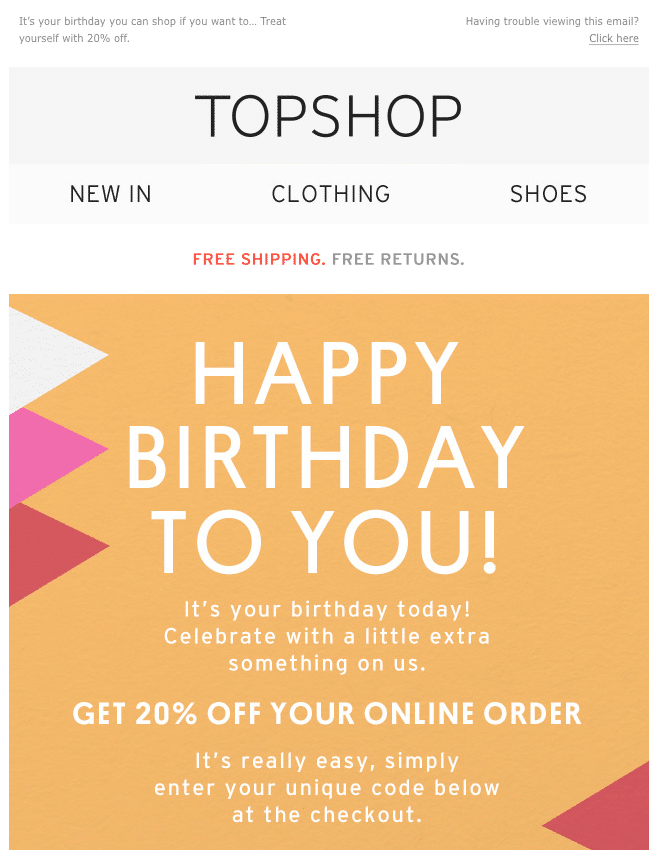
Topshop "Happy Birthday" Email
However, it is crucial to calibrate these campaigns well. A common mistake is lacking relevance or mistiming, which can seriously diminish the effectiveness of these marketing efforts. For example, a Christmas campaign that starts too late or is not targeted enough may not resonate with the audience, thus resulting in a lukewarm response.
By aligning the brand message with the values and expectations associated with each event, companies can not only boost customer engagement but also strengthen brand loyalty. To achieve this, it is essential to understand the nuances of each holiday and targeted culture, adapting campaigns to be as relevant and engaging as possible. By carefully planning these initiatives to coincide with consumer buying behaviors, brands can maximize the impact of their marketing actions during these key periods.
The future of customer segmentation
Segmentation has experienced and will continue to undergo remarkable evolution with the development of artificial intelligence.
Analyzing massive amounts of data is now simplified and allowed in near real-time. This makes it easier to identify hidden buying patterns or interests among your consumers. New segment proposals are thus offered to you, going well beyond traditional segmentations!
Furthermore, artificial intelligence can predict future behaviors. Expected additional Lifetime Value, churn risk, the best next offer to make (Next Best Offer: best product/service, at the best time), etc.: these are predictive attributes that allow you to segment your customer base to best meet the expectations of a given segment!
👉🏼 If you want to see what DinMo does in terms of segmentation for Galeries Lafayette, check our dedicated customer story!
Conclusion
Marketing segmentation is a key strategy for companies to align their actions with the expectations and preferences of their clientele. Through this approach, you can identify and categorize your customers into different segments based on criteria such as their buying behavior, demographic characteristics, or consumption data.
By understanding the different segments of your customer base, you will be able to offer targeted offerings and marketing campaigns adapted to each segment. Using demographic segmentation, for example, you can classify your customers by gender, income, or social class. This way, you can develop specific products and marketing strategies for each customer segment.
In conclusion, marketing segmentation is an essential practice for businesses. By understanding the different characteristics of your customer base and using relevant segmentation criteria, you will be able to develop offerings and marketing campaigns tailored to each segment. Through a segmented approach, you can maximize your marketing efficiency and achieve your business goals.
About us: We are pioneering the next generation of Customer Data Platforms with our composable CDP. Our flagship features Visual Audience Builder, One-click Activation, AI predictions empower business teams to segment their customer database and use it in all their marketing tools, turning customer data into profitable growth. For more information about DinMo, reach out to us!













